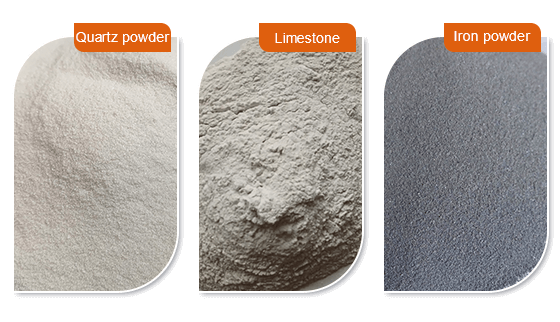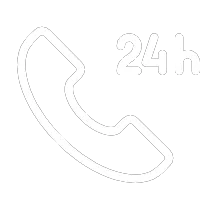 Phone/Wechat/Whatsapp:+86-15538359886
Phone/Wechat/Whatsapp:+86-15538359886
 Email:crusher@hn-vest.com
Email:crusher@hn-vest.com
 Phone/Wechat/Whatsapp:+86-15538359886
Phone/Wechat/Whatsapp:+86-15538359886
 Email:crusher@hn-vest.com
Email:crusher@hn-vest.com
The ball mill uses are wide, as an indispensable ball grinding mill for various types of metal and non-metal ore beneficiation, cement manufacturing.
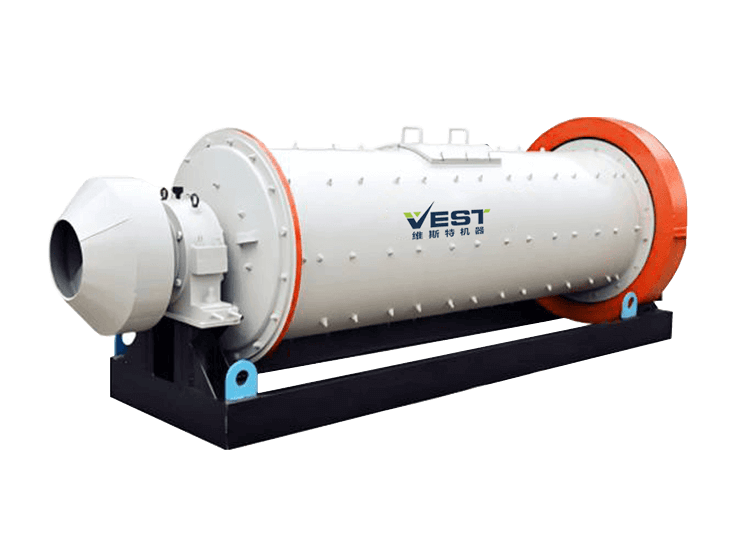
The ball mill uses grinding media such as steel balls to impact and grind stones to achieve crushing, and can grind materials with a feed particle size of less than 25mm into finer particles.
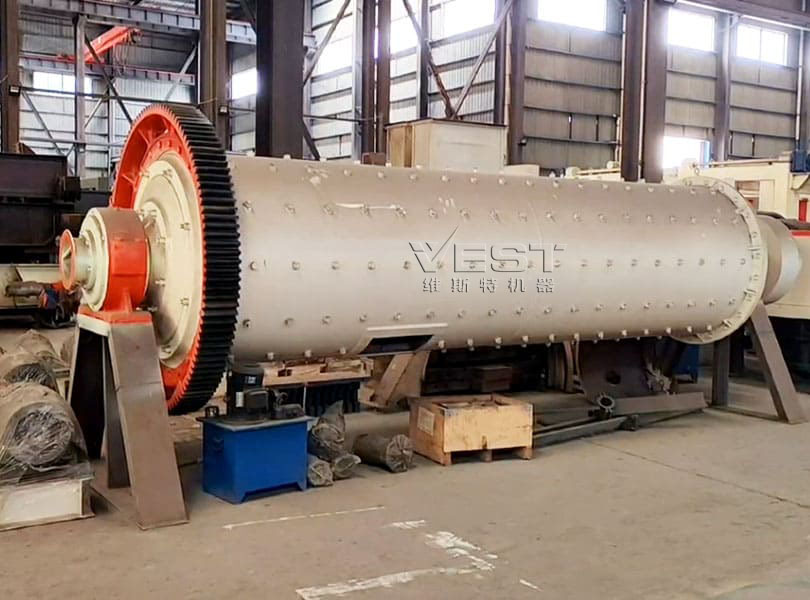
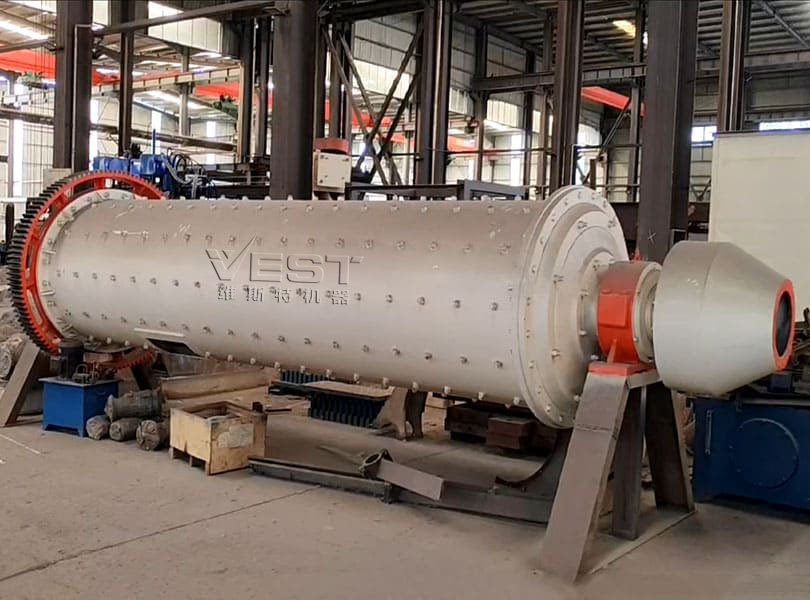
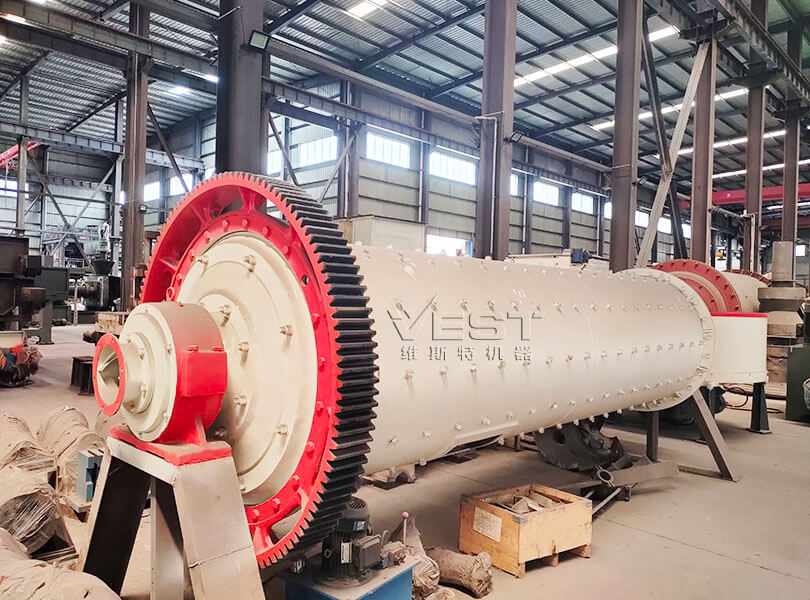
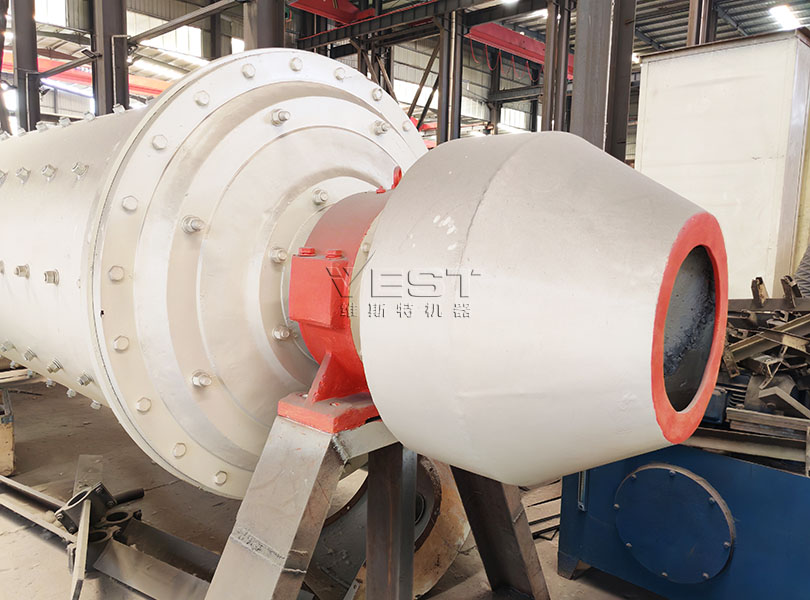
Steel balls or ceramic balls are used as grinding media to achieve efficient material crushing through rolling and impact, and are suitable for both dry and wet grinding methods.
It can process materials of different hardness (Mohs hardness ≤ 9), including metal ores, non-metallic ores and chemical raw materials.
By adjusting the rotation speed, grinding time or media ratio, the output fineness can be controlled (usually 80-400 mesh, and ultra-fine type can reach 2500 mesh).
The cylinder body is made of wear-resistant lining and high-quality steel, which is reliable in operation and easy in maintenance, and is suitable for continuous large-scale production.
Ball mills are widely used in the mining industry to grind various types of ores to separate and extract useful minerals. They are also commonly used in cement production to grind raw materials such as limestone and clay into fine powder, providing a basis for subsequent clinker burning and cement production.
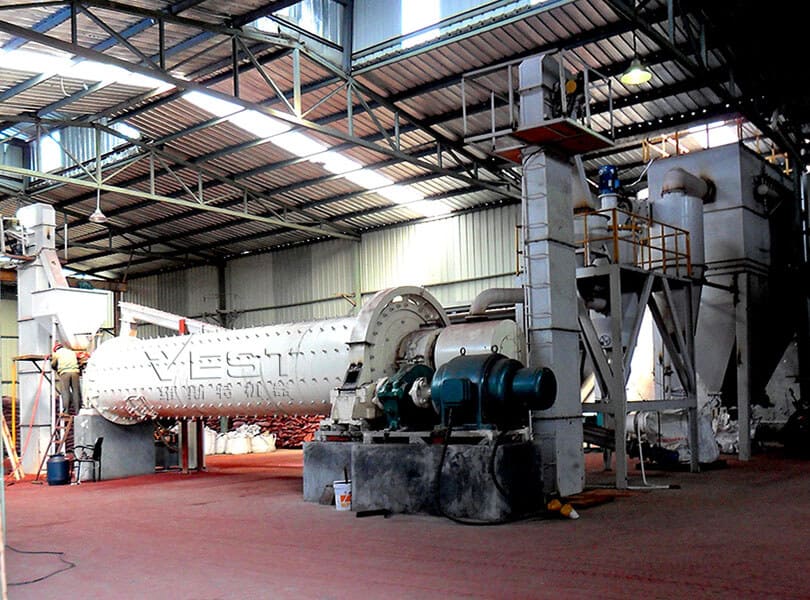
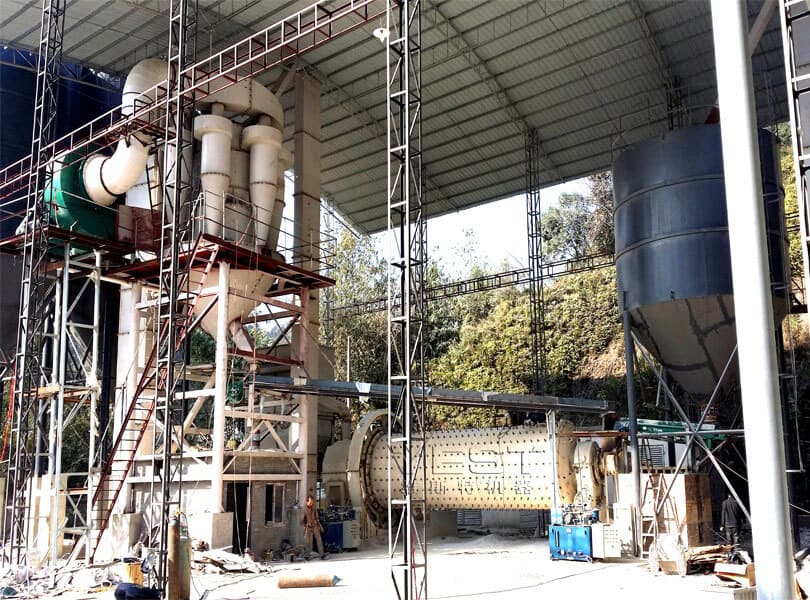
Ball mills work by using balls to grind materials.
Materials such as iron ore, paint, and ceramics are added to the ball mill. Next, the ball mill is activated so that it rotates—either on its vertical or horizontal axis. As the ball mill rotates, the balls bounce around while striking the enclosed material.
The force of these strikes helps to grind the material into a finer, less coarse medium.
Depending on the requirements, ball mills can be operated in different modes: wet grinding & dry grinding.
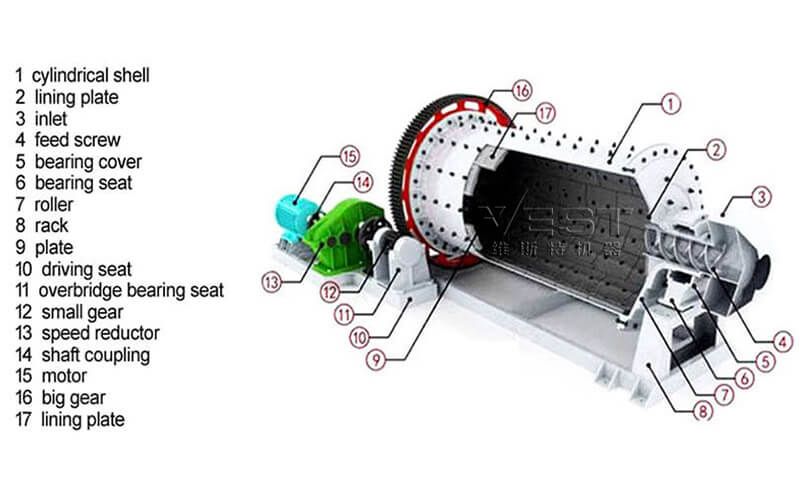
*The output will vary according to different materials, feed particle size and other factors
| Model | Rotary speed (r/min) | Balls load | Feeding size (mm) | Output size (mm) | Capacity(t/h) | Power(kw) | Weight(t) |
| φ900×3000 | 35.6 | 2.4 | ≤25 | 0.075~0.89 | 0.8- 2.5 | 22 | 5.3 |
| φ1200×3000 | 32.4 | 4.5 | ≤25 | 0.074~0.4 | 1.6- 3 | 37 | 12.1 |
| φ1200×4500 | 32.4 | 7 | ≤25 | 0.074~0.4 | 1.83- 3.9 | 55 | 13.1 |
| φ1500×3000 | 29.7 | 7.5 | ≤25 | 0.074~0.4 | 2.8- 4 | 75 | 14.8 |
| φ1500×4500 | 29.7 | 11 | ≤25 | 0.074~0.4 | 4.8- 7 | 110 | 19.9 |
| φ1500×5700 | 29.7 | 14 | ≤25 | 0.074~0.4 | 5-8 | 130 | 23.4 |
| φ1500×7000 | 29.7 | 17 | ≤25 | 0.074~0.4 | 6-8 | 155 | 27.5 |
| φ1830×3000 | 25.4 | 11 | ≤25 | 0.074~0.4 | 4.5- 10.5 | 130 | 26.6 |
| φ1830×4500 | 25.4 | 17 | ≤25 | 0.074~0.4 | 6.8- 11.5 | 155 | 30.4 |
| φ1830×6400 | 25.4 | 24 | ≤25 | 0.074~0.4 | 7.5- 12.5 | 210 | 32.3 |
| φ1830×7000 | 25.4 | 26 | ≤25 | 0.074~0.4 | 7.8- 13.8 | 245 | 34.2 |
| φ2100×3000 | 24.9 | 15 | ≤25 | 0.074~0.4 | 5.8- 14 | 210 | 32.3 |
| φ2100×4500 | 24.9 | 23 | ≤25 | 0.074~0.4 | 9.5- 18 | 245 | 40 |
| φ2400×3000 | 20.8 | 20 | ≤25 | 0.074~0.4 | 7.8- 18 | 245 | 51.3 |
| φ2400×4500 | 20.8 | 30 | ≤25 | 0.074~0.4 | 13.7- 28 | 380 | 63.7 |
| φ2700×4000 | 19.5 | 34 | ≤25 | 0.074~0.4 | 15- 28 | 475 | 89 |
| φ2700×4500 | 19.5 | 39 | ≤25 | 0.074~0.4 | 16.5- 36 | 475 | 97 |
Note: Capacity will vary if project requests have different factors, such as stone type, discharging size, gravity ect.
Have Any Questions!
Don't Hesitate To Contact Us Anytime.
